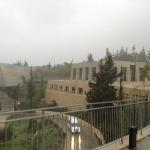
I continue to extract and share notes from Consciousness Beyond Life: The Science of the Near-Death Experience (New York: HarperCollins, 2010), by the Dutch cardiologist and researcher Pim van Lommel:
All science is empirical science, all theory is subordinate to perception; a single fact can overturn an entire system. (Frederik van Eeden, cited on page v)
It is 1969. At the coronary care unit the alarm suddenly goes off. The monitor shows that the electrocardiogram of a patient with a myocardial infarction (heart attack) has flatlined. The man has suffered a cardiac arrest. Two nurses hurry over to the patient, who is no longer responsive, and quickly draw the curtains around his bed. One of the nurses starts CPR while the other places a mask over his mouth and administers oxygen. A third nurse rushes over with the resuscitation trolley that contains the defibrillator. The defibrillator is charged, the paddles are covered in gel, the patient’s chest is bared, the medical staff let go of the patient and the bed, and the patient is defibrillated. He receives an electric shock to the chest. It has no effect. Heart massage and artificial respiration are resumed, and, in consultation with the doctor, extra medication is injected into the IV drip. Then the patient is defibrillated for the second time. This time his cardiac rhythm is reestablished, and more than a minute later, after a spell of unconsciousness that lasted about four minutes, the patient regains consciousness, to the great relief of the nursing staff and attendant doctor.
That attendant doctor was me. I had started my cardiology training that year.
Following the successful resuscitation, everybody was pleased — everybody except the patient. He had been successfully revived, yet to everybody’s surprise he was extremely disappointed. He spoke of a tunnel, colors, a light, a beautiful landscape, and music. He was extremely emotional. The term near-death experience (NDE) did not yet exist, and I had never heard of people remembering the period of their cardiac arrest. While studying for my degree, I had learned that such a thing is in fact impossible: being unconscious means being unaware — and the same applies to people suffering a cardiac arrest or patients in a coma. At such a moment it is simply impossible to be conscious or to have memories because all brain function has ceased. In the event of a cardiac arrest, a patient is unconscious, is no longer breathing, and has no palpable pulse or blood pressure. (vi-vi)












